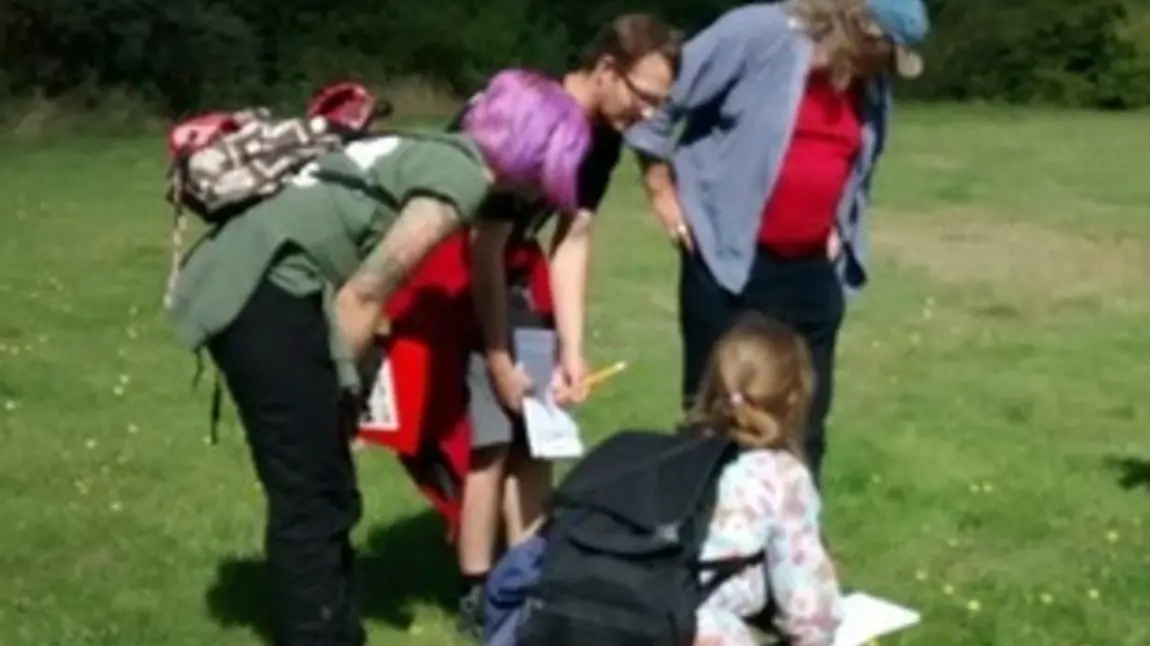Getting started with your biodiversity project

Working in the heart of the Dearne Valley we certainly aren’t short of colliery sites, with coal mining having once dominated the landscape. However since the decline of the coal industry, many have been re-landscaped. Some of the sites have been left to be reclaimed by nature; others have been reclaimed and regenerated through a concerted approach.
In all cases there is very little - or no - information about the biodiversity to be found in these colliery sites, today leaving many vulnerable to development pressures. Part of my role is to re-engage and educate the local community about what valuable havens these sites actually are for wildlife. It is hoped that with a renewed outlook local communities will become more positively engaged with the sites to help to protect, conserve and enhance them for future generations.
Where to start? Discovering which species you have
The first stage of developing this project was to collate from various sources the existing data and information on what was already known about the colliery sites. A list of 24 potential sites was identified with help from South Yorkshire Mining Advisory Service (SYMAS) and our local biological records centre. Six sites were prioritised to look at in greater detail, through desktop research which built a greater picture of the wildlife and habitat potential.
There are lots of online resources that can help you find out more about the wildlife of sites of interest, these include:
[quote]"It is hoped that with a renewed outlook local communities will become more positively engaged with the sites to help to protect, conserve and enhance them for future generations."[/quote]
- Magic Maps
- National Biodiversity Network
- and for a small charge your local wildlife records centre
Obtaining this information beforehand allowed a greater understanding of the wildlife on site and to identify where there were gaps in data. The gaps may be because a certain species is absent, but in other cases it is usually because no one yet has gone out and recorded it. On these local pit top sites, the available records suggested a minimal presence of reptiles, yet having visited some of the sites I expected that most actually hold a high potential for these fascinating creatures.
Finding the right expertise
Partnership work with Sorby Natural History Society and international reptile and amphibian expert, John Newton, led to the development of a volunteer survey programme of the key sites. Volunteers would be provided with training and support to develop their confidence, field and ID skills. I put out a call for volunteers to get involved in a reptile survey programme and initially organised a couple of taster events focusing on reptiles in order to raise awareness of the project.
Generating interest
A Reptile Discovery Day attracted over 220 people, many of who were local families. They were able to find out more about the reptiles and most importantly how we can protect them and submit vital wildlife records. Many of the attendees reported seeing good numbers of grass snakes in their garden or at local sites but with little idea of what to do with such data. It was great to see so much enthusiasm in the room and the adults seemed to learn a great deal as well as the children.
Upskilling volunteers
The next workshop was more targeted to volunteer recruitment to give volunteers a greater insight into the DVLP reptile monitoring project. A basic survey starter pack was produced and beginner training workshops with delivered to cover reptile survey, monitoring, ecology and identification providing volunteers with the basic skills needed to conduct and record reptile sightings. The 20 volunteers were ready to start recording reptiles to obtain valuable wildlife records for our pit top sites.
[quote]"By supporting communities to take a greater interest in their local habitats and wildlife we will inspire the next generation of naturalists..."[/quote]
Recording and sharing data
To date a total of 12 volunteers have carried out 38 site visits across six of the primary colliery sites, with 35 positive sightings of grass snakes formally recorded. At the end of the survey season these vital records will be collated and passed onto the local records centre, where they can be used to help with the future protection of such a threatened species. Where possible we will also use this data to feed into more sympathetic site management, to ensure reptile habitats are protected and species numbers retained.
The future
Involving volunteers through the project in conducting reptile surveys has meant that we have been able to educate and inform local communities about the importance of pit top sites for wildlife, with reptiles being one key species group to focus on. By supporting communities to take a greater interest in their local habitats and wildlife we will inspire the next generation of naturalists to protect important species, record data and educate others about these wonderful creatures.
Efallai y bydd gennych chi ddiddordeb hefyd mewn ...



